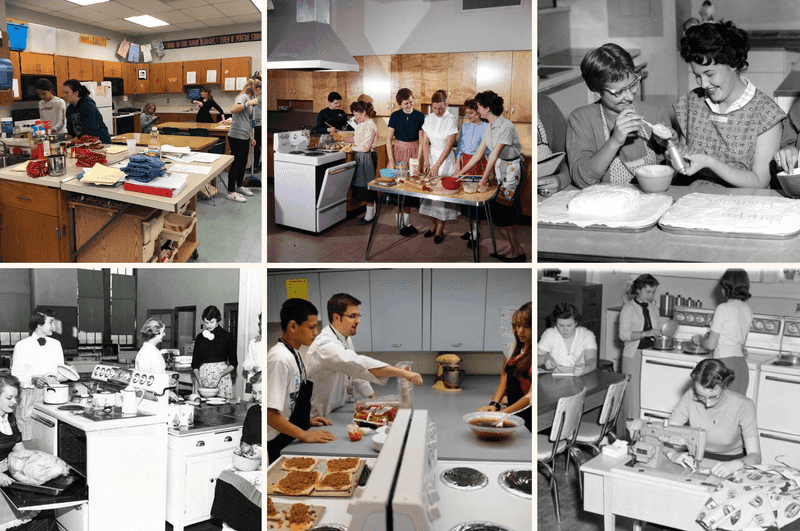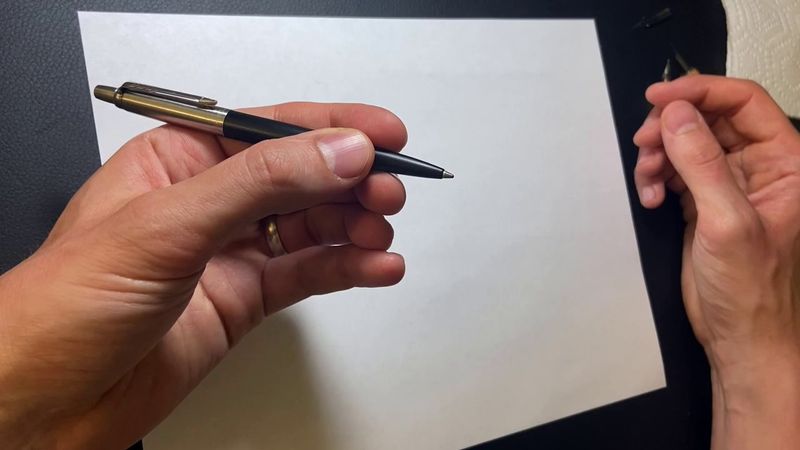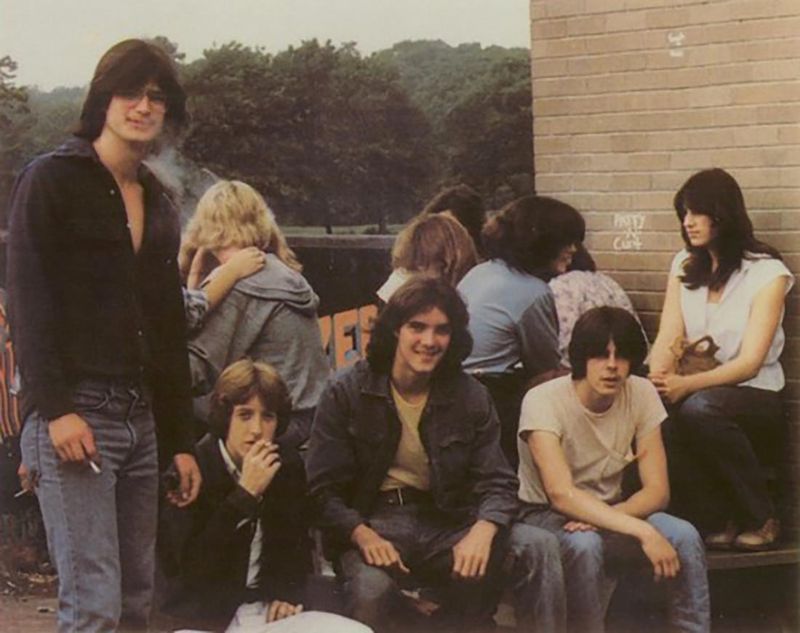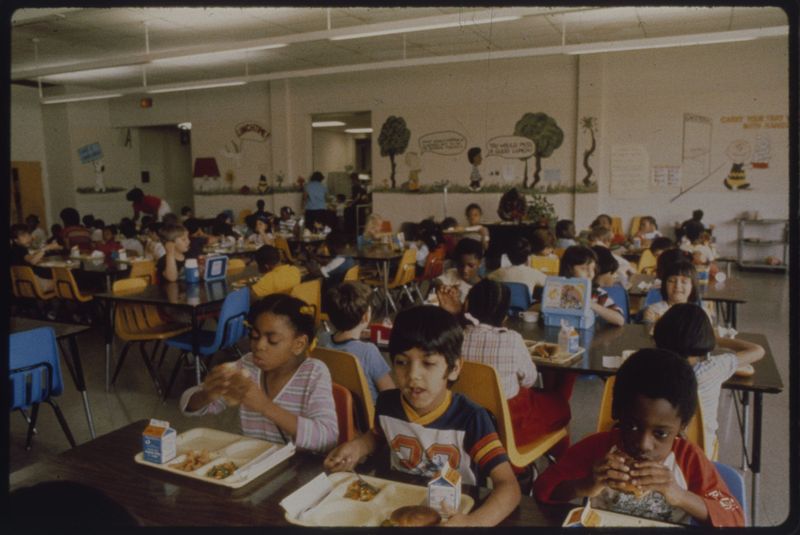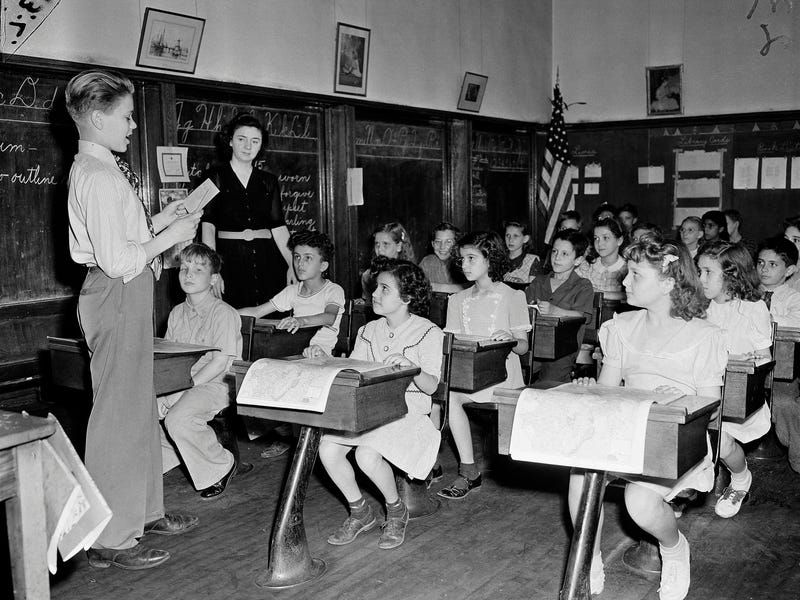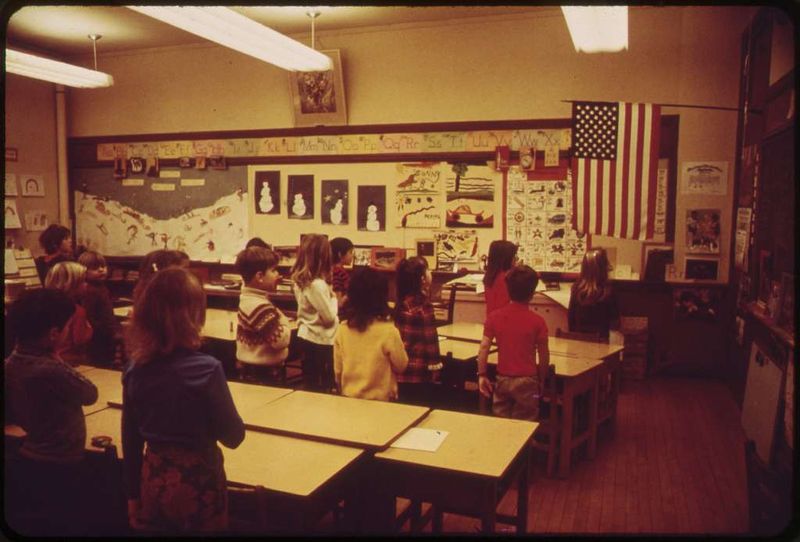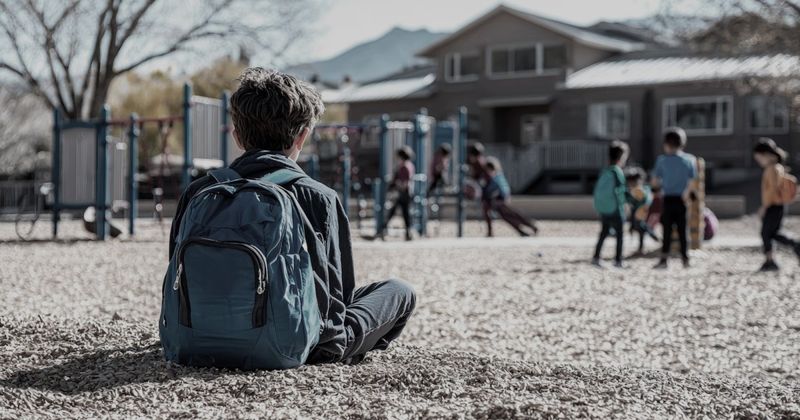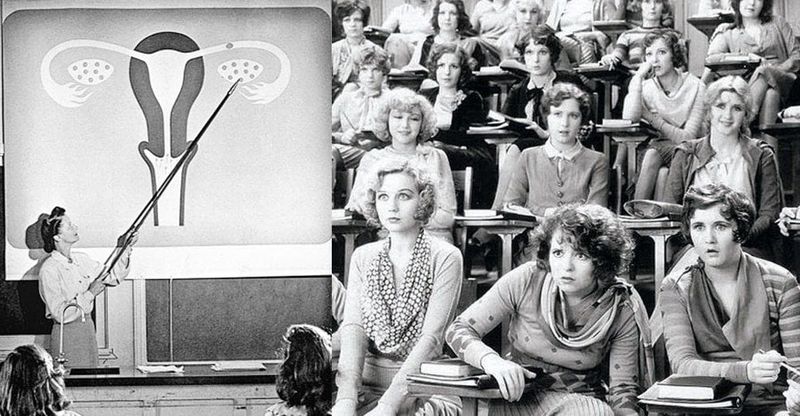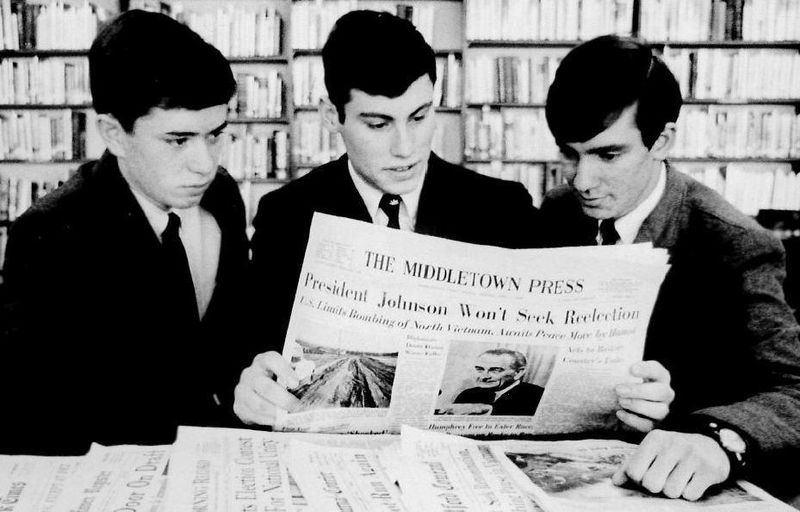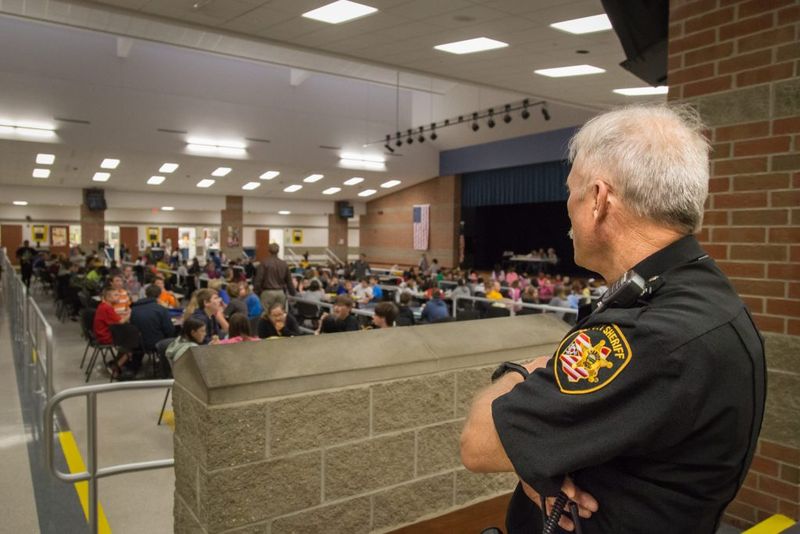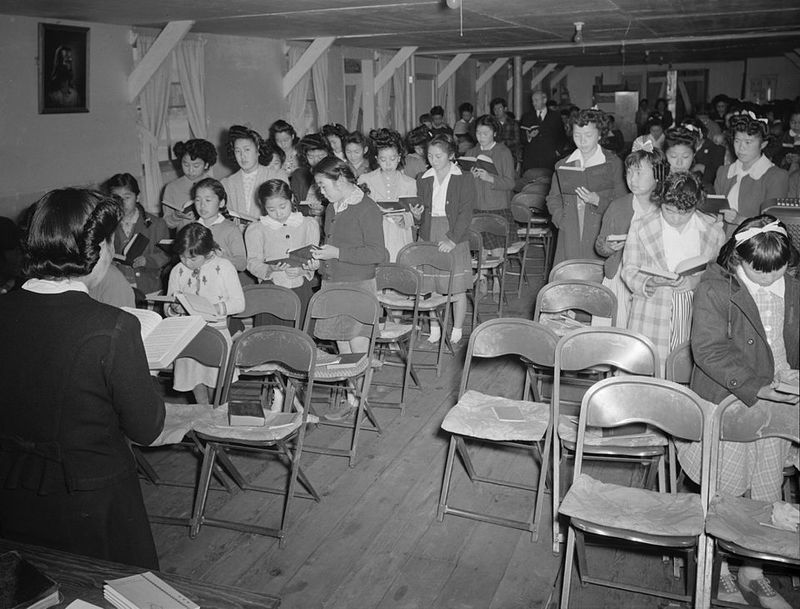Let me be real: school in the ’70s wasn’t all disco balls and groovy jeans. Underneath the dusty textbooks and the clack of chalk, there were rules that—looking back—make about as much sense as a pop quiz on a Saturday.
If you’ve ever had a parent or teacher say, “Back in my day…” and felt the urge to roll your eyes, you’re not alone. Here’s the truth: a lot of what passed for normal or necessary in those classrooms would never fly now, and honestly, some of it leaves a mark.
So, here’s what nobody tells you about the so-called “good old days”: the rules didn’t just shape how kids acted—they shaped who we thought we had to be. Some of these will make you laugh. Others might hit a nerve or two. Either way, it’s time to talk about the 18 school rules from the 1970s that just don’t add up in the world we live in now.
1. Corporal Punishment
Let’s not sugarcoat it: the threat of a wooden paddle hung over every classroom like a storm cloud. If you mouthed off or passed a note, you didn’t just get a glare—you heard the snap of that paddle on someone’s desk.
This wasn’t discipline, it was fear dressed up as order. Kids learned to keep secrets and swallow their feelings just to avoid a trip to the principal’s office. I remember one boy who flinched every time someone shut a book loudly—his brain wired for the next blow.
Maybe people thought pain built character. What it actually built? Anxiety, shame, and stories people still tell in therapy. The only thing that “got computed” was how to stay invisible.
2. Gender-Specific Dress Codes
Imagine standing in front of your closet and knowing half your clothes are off-limits because of your gender. In the ’70s, girls caught in pants were sent home and boys with hair brushing their collars faced scissors—or worse, suspension.
Dress codes weren’t subtle; they shoved you into a box before you could even figure out who you wanted to be. There were whispered threats about “looking proper” and a whole lot of silent resentment in the air.
Looking back, it’s easy to see how these rules didn’t just control outfits—they policed identity. If you think fashion is just about style, ask someone who grew up with these rules how it felt to have their body debated every morning.
3. Mandatory Home Economics and Shop Classes
Here’s a wild thought: your future was basically decided by your gender before you could spell “curriculum.” Boys got sawdust and power tools; girls got recipes and sewing machines, end of discussion.
Nobody asked if you actually liked cooking or wanted to build a bookshelf. If you tried to cross over, you got side-eye from teachers and open snickers from classmates. It was all about fitting the mold, even if the mold felt suffocating.
Decades later, I wonder how many hidden talents got shelved because someone decided pink went with pastries and blue with hammers. This wasn’t about skills; it was about shrinking your possible selves.
4. Prohibition of Left-Handed Writing
Some kids were told that being left-handed was a problem to be fixed, not a quirk to be celebrated. If you wrote with your left, you might get your pencil snatched away and a lecture about “proper form.”
I knew a girl who hid her hand under her desk, switching pens whenever the teacher walked by. The shame never really faded, even when the rules did. It sent the message that difference was something to erase, not embrace.
We talk about acceptance now, but back then, kids learned to hide the parts of themselves that didn’t fit the script. All for what? Neater handwriting?
5. Smoking Areas for Students
Here’s a scene straight out of a weird movie: huddles of teens lighting up in full view of teachers. School had literal smoking sections—like bus stops for bad decisions. No one blinked if you strolled out between classes to puff away your nerves.
If you tried to avoid the smoke, good luck. The smell followed you into algebra and clung to your lunch. Some kids started because it made them look older, tougher—like they’d figured out a shortcut to adulthood.
Did it make sense? Not really. But it shows just how different the world was when health warnings were background noise and peer pressure got a designated zone.
6. Silent Lunches and Hallways
Ever tried not to laugh when your friend pulls a face across the lunch table? Now imagine being punished for even whispering. In the ’70s, some schools turned lunchtime into a silent prison—a place to eat, not connect.
Hallways were just as strict. You’d tiptoe past doorways, scared a stray giggle would land you in detention. It wasn’t about manners, it was about control.
Kids need space to vent, to gossip, to be ridiculous. But the rule was clear: keep your head down and keep quiet. For some, lunchtime became the loneliest hour of the day.
7. Strict Appearance Policies
There was a list of hairstyles that made you “unacceptable”—afros, braids, even sideburns. If your look didn’t fit some invisible list, you got sent to the office or forced to cut it off.
Some kids tried to fight back, but mostly you learned to hide your curls under hats or pull your hair tight with rubber bands. One girl said every time they cut her hair, she felt like she lost a piece of herself.
It wasn’t just about looks; it was about erasing culture and individuality. Rules like that didn’t keep the peace—they kept kids small.
8. Prohibition of Personal Hygiene Products
Teenage girls getting their bags searched for deodorant—imagine the mortification. In some schools, carrying sanitary pads or tampons was considered “improper,” as if managing your body was something to hide.
It wasn’t just awkward—it was humiliating. Some girls missed class rather than risk being outed for having pads in their purse.
Nobody talked openly about bodies or health. The lesson was clear: shame is safer than honesty. For a lot of girls, that message stuck long after graduation.
9. No Talking in Class
Raise your hand. Wait to be called. Speak only if you have the right answer. That was the rhythm of every day. If you got caught whispering, you paid for it with detention or a public scolding.
Some kids learned to hide notes in books or mouth words across the aisle, but mostly you just counted down the minutes until you could breathe again. Discussions? Forget it. Curiosity took a back seat to silence.
We say we want kids to engage now, but back then, participation got you in trouble. The lesson: keep your head down and your ideas to yourself.
10. Mandatory Pledge of Allegiance
Every morning, you stood up and recited the Pledge of Allegiance. No opt-out, no questions. If you hesitated or stayed seated, the room got very cold, very fast.
Some kids didn’t understand what the words meant—others disagreed but had no voice to say so. The rule wasn’t about unity; it was about conformity.
You learned quickly that independence had limits. For a lot of kids, it felt like you had to check your real thoughts at the door or risk standing out for all the wrong reasons.
11. Tracking and Ability Grouping
Think about having your academic fate decided by a test you took when you were barely out of elementary school. In the ’70s, tracking was common—kids were sorted into “advanced,” “average,” or “remedial” groups. The labels stuck, whether they fit or not.
Some kids wore the label with pride, while others carried it like a secret weight. There was little room to move up, even if you grew or changed.
For some, this system was a ceiling, not a ladder. It taught you to judge yourself by someone else’s scorecard, and it took years to shake off that label.
12. No Disability Accommodations
Kids with disabilities were often left behind—literally. Schools didn’t have ramps or accessible bathrooms, and there were no aides to help with classwork.
If you needed extra time or a different setup, the answer was usually “no.” Some kids ended up isolated in separate rooms, missing out on friendships and shared experiences.
This wasn’t just careless, it was cruel. A whole generation of kids learned that asking for help was something to be ashamed of, not a basic right.
13. Strict Attendance Enforcement
Got the flu? Too bad. In the ’70s, missing a day could mean a home visit or a call to your parents at work. Attendance was king, sickness and sanity were condemned.
Some kids dragged themselves to class with fevers, terrified of falling behind or getting in trouble. There was no room for nuance—every absence got the same punishment.
It taught you to ignore your body’s signals and power through, even when you shouldn’t. That’s a hard lesson to unlearn.
14. Segregated Sports and Clubs
Boys played football, girls cheered. Clubs had pink and blue sign-up sheets, and crossing the line was social suicide. If you wanted to try something “off-limits,” you got stares or sarcastic comments until you backed down.
Some girls longed to join the science club; some boys secretly wanted to dance. The rules boxed you in, and the penalties for stepping out were harsh.
Looking back, it wasn’t just about sports or after-school meetings. It was about teaching you to stay in your lane, even when your heart was somewhere else.
15. Outdated Sex Education Policies
Sex ed was a mix of silence and shame. Most classes focused on abstinence, and real questions got you a red face or a lecture about morality. Forget about learning anything practical or honest.
Girls whispered in bathrooms, swapping rumors because the adults wouldn’t say the words out loud. Boys learned to joke about it or pretend they didn’t care.
The result? A lot of confusion, anxiety, and bad information. The rules didn’t protect anyone—they just made everyone feel awkward and alone.
16. Hair Length Rules for Boys
If you were a guy, hair length was a daily gamble. Let your hair get too long, and you risked being called a troublemaker or sent to the office for a forced trim.
Some boys tried hiding under hats or tying up their hair, but the rule was relentless. Haircuts became moments of protest—or defeat.
What was this really about? Not hygiene. It was about making sure nobody rocked the boat or stood out too much. Style became a battleground for control.
17. Zero Tolerance for Dissent
Ever wonder what happened if you disagreed with a teacher? You learned quickly: you kept your mouth shut, or you faced detention—or worse. Some teachers treated questions as a threat, not curiosity.
One time, a friend asked why a rule existed. The room went silent, and the teacher’s glare said everything. From then on, nobody questioned anything.
This wasn’t respect; it was fear. The message was, “Don’t think, just obey.” It made real conversation impossible.
18. Religion in School Assemblies
Prayer before assemblies happened like clockwork. If you didn’t bow your head, you stuck out—sometimes on purpose, sometimes by accident. There was pressure to participate, even if your beliefs were different.
Some kids felt comforted; others felt exposed. There wasn’t much room to say “no” politely, so most just mumbled along and hoped not to be noticed.
The rule blurred the line between school and church, and for a lot of us, it was an early lesson in fitting in, even when it hurt.




